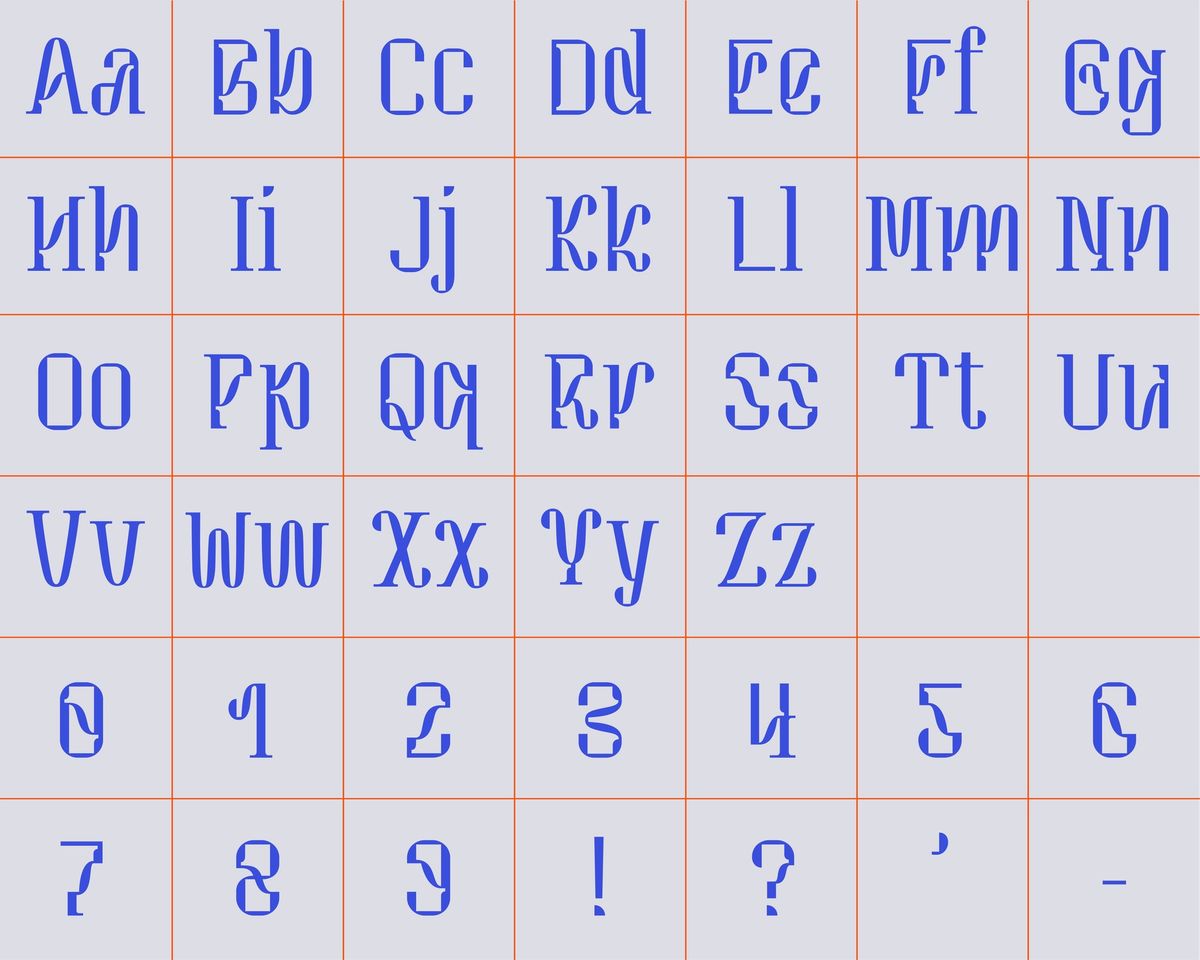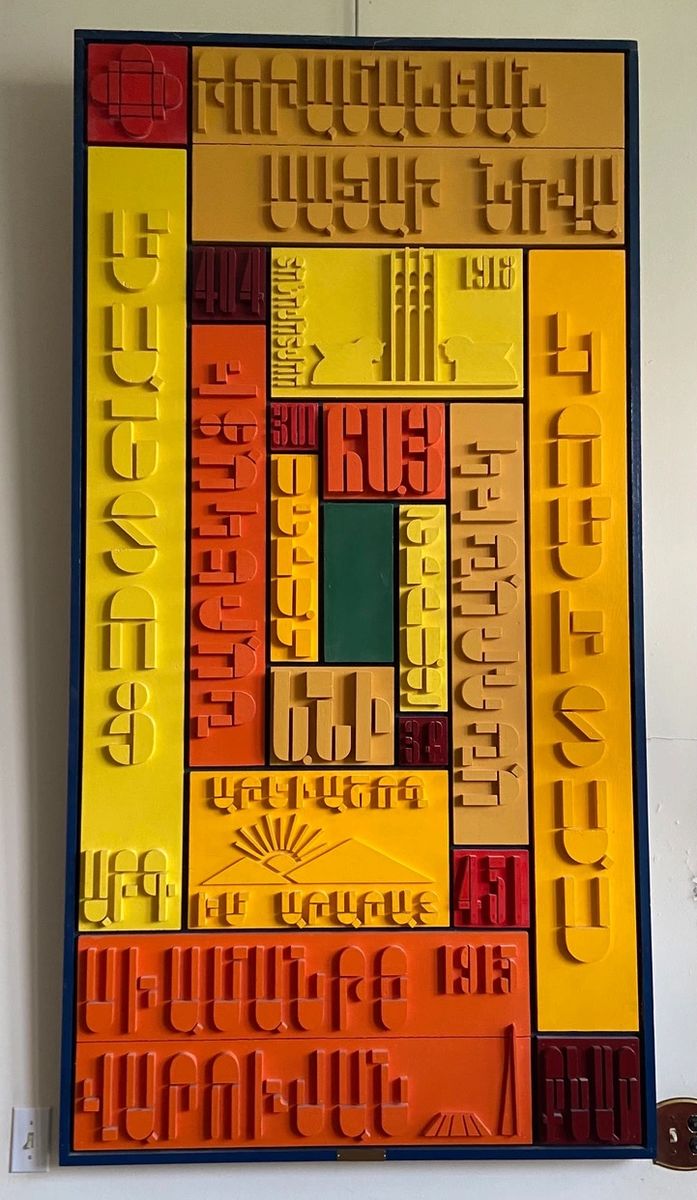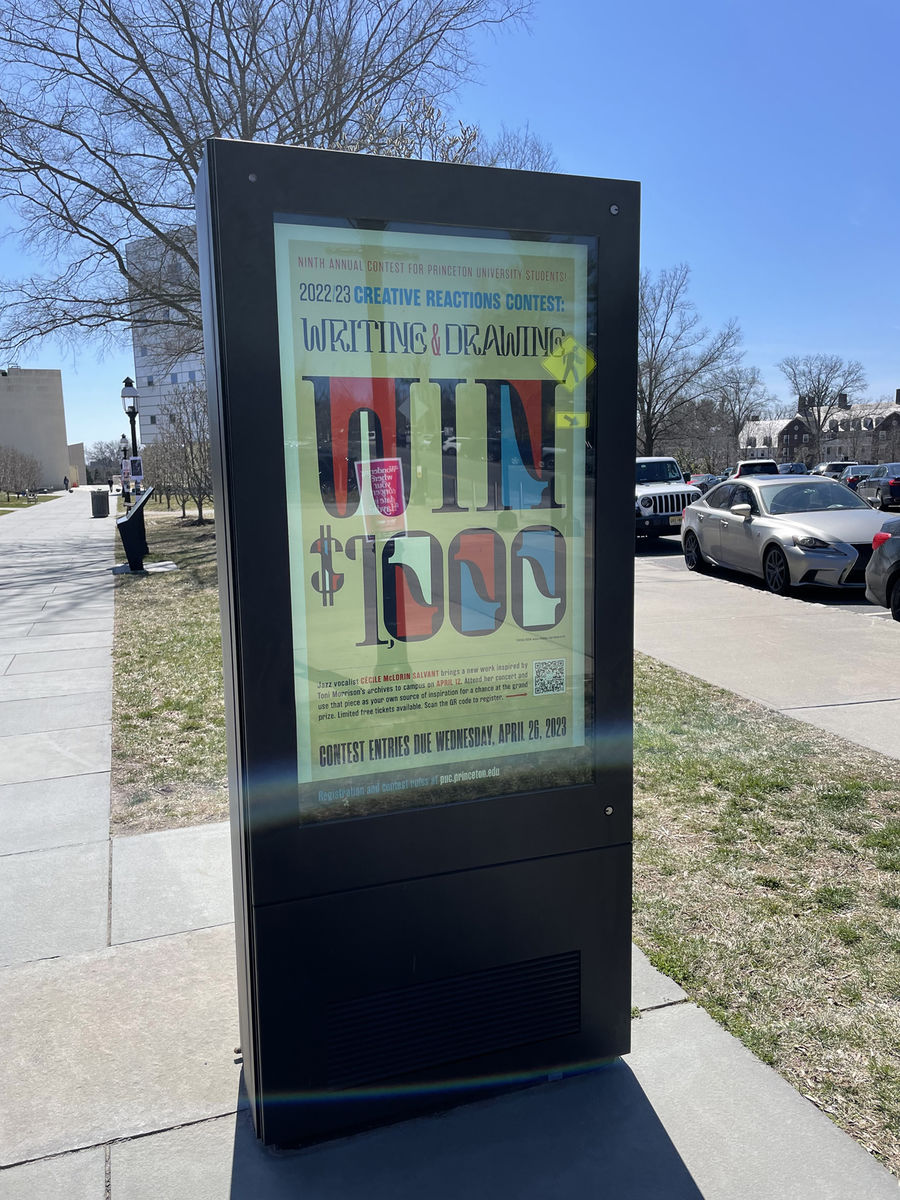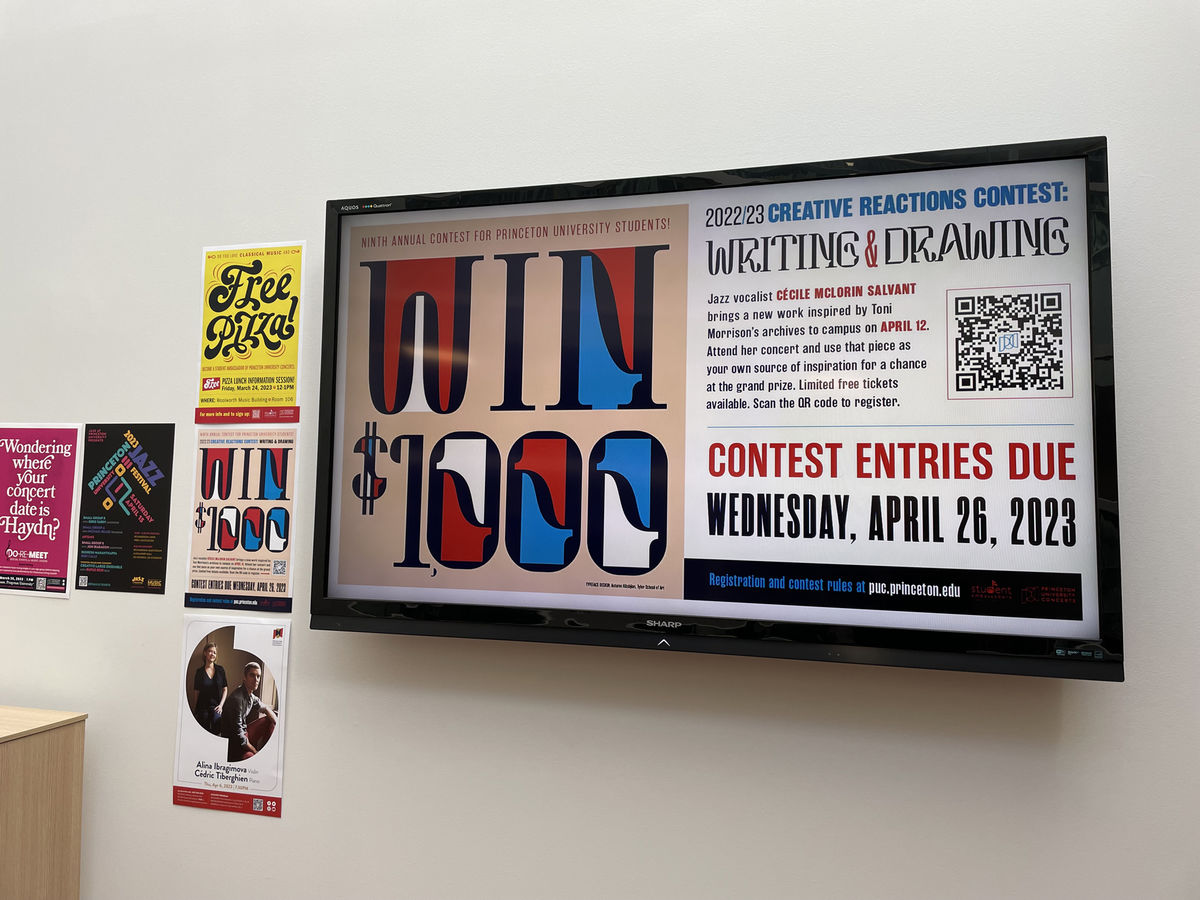As a senior Graphic and Interactive Design student, Autumn Kitabjian (BFA ’23) found inspiration in her grandfather’s wood carving of the Armenian alphabet to create a display font in last fall’s Special Topics course Typeface Design, taught by Adjunct Professor Tom Uhlein.
“I was trying to find some purpose to ground my font in some meaning so I started emulating this wooden wall artwork created by my grandfather that I grew up seeing in his house,” said Kitabjian, whose paternal grandfather, Hagop Artin Kitabjian, was a well-known architect who designed many iconic buildings in Philadelphia. “It was very geometric.”
Ultimately, she decided to diverge from the boxy lettering and experiment more, ending up with something geometric yet whimsical: Phoga.

According to Kitabjian’s website, Phoga “takes the viewer on a unique rhythmic journey full of unexpected twists and turns. [The font] is filled with dynamic personality, combining a cold technological rigidity with tapered curves and flourishes you’ve only ever seen in script typefaces.”
Kitabjian said, “My process was very much about combining simple geometric shapes and seeing what kind of letter forms I could create, mixing super geometric shapes with more flowing elements,” adding that her grandfather’s creative style gave her a good starting point.

Masterpiece 1 by Hagop Artin Kitabjian
Her professor, Uhlein, was so impressed with the font that he asked to use it in a poster project for Princeton University Concerts, promoting its annual Creative Reaction Contest. The contest is designed to capture the impact of music, as perceived by Princeton University undergraduate and graduate student writers and artists. Winners receive $1,000.
A new visual call to action concept is developed each year to promote the contest. The promotional pieces (posters, table-tents, digital screens, etc.), are displayed throughout the Princeton University campus, and a book is produced to celebrate the winners.


Outdoor digital billboard (left) and monitor slide, wall poster using Phoga typeface
“I felt the typeface Autumn created had a youthful energy and visual interest that would resonate with the students,” said Uhlein. “The form to counterform relationship within the typeface could also be used as a distinct design element.” Counterform is the area of a letter that is entirely or partially enclosed by the letter form.
Kitabjian's typeface also received an Award of Excellence at the UCDA 2023 Awards (University & College Designers Association) 2023.
In addition to drawing inspiration from Armenian typefaces, Kitabjian considered Latin typefaces that she thought resembled Armenian typography, and typefaces that she just liked. She narrowed the images to a few that felt similar and embodied the kind of typeface she wanted to design.
She started exploring different ways to create letterforms out of geometric shapes, which involved some sketching on paper, but mostly work in Illustrator, using the rigidity of vector shapes and iterative changes. She focused on creating the “n” letterform, which has a structure that can act as a base for creating many other letters, she explains on her website.
“My system was ultimately created by feeling out what worked and what didn’t work,” shw writes. “The challenge was to apply the system I created for the n, m, h, u letterforms to very different letterforms like the t, k, and s. These different forms presented opportunities to create new elements … that would contribute to the typeface’s unique personality and work seamlessly alongside my previously established elements.”
“This was really a homage to my grandfather,” said Kitabjian of her typeface design. "It feels awesome that people are appreciating and enjoying this project that I spent a lot of time on. Given that this is the first typeface I've ever designed, I feel very encouraged to create more," she said.